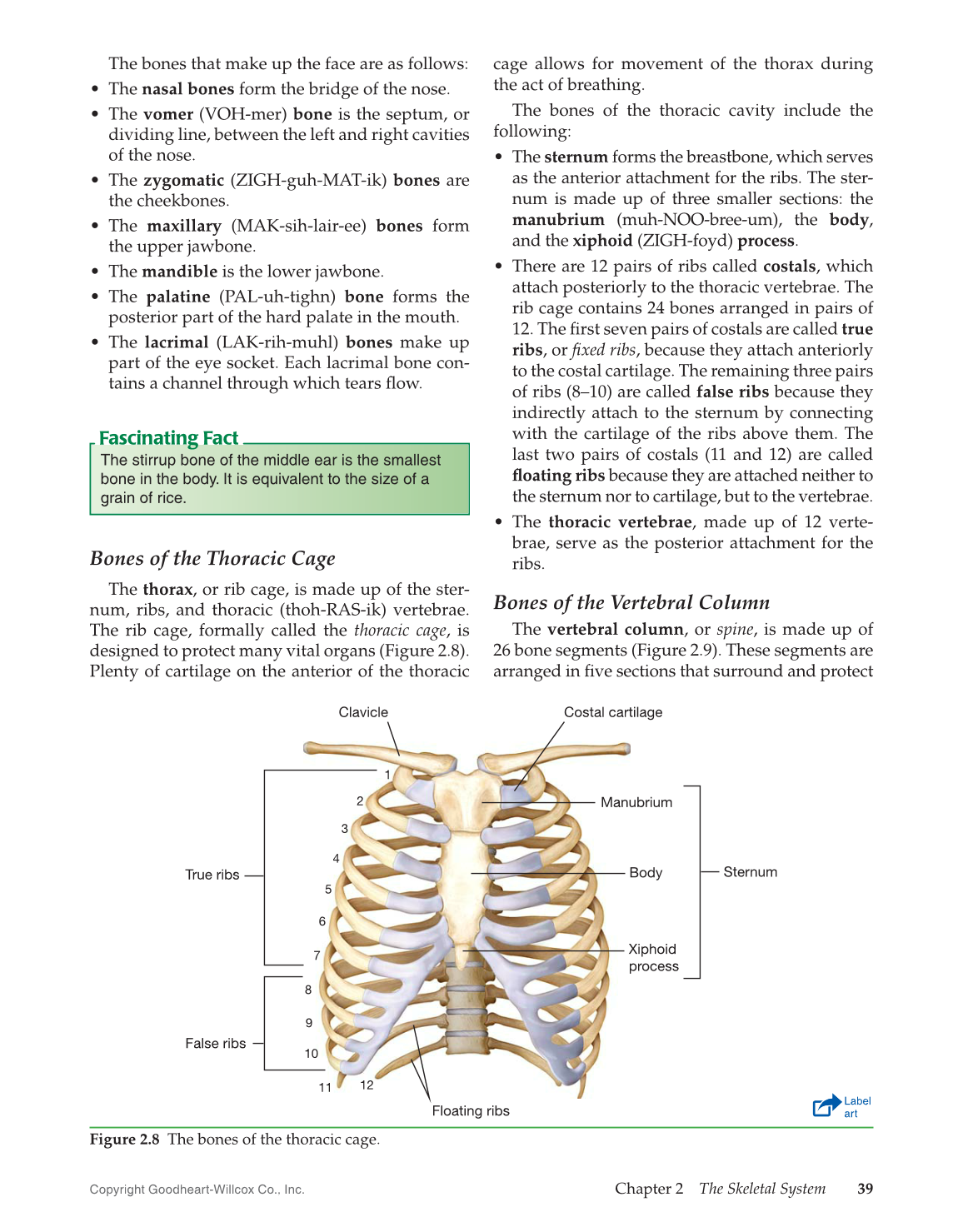Copyright Goodheart-Willcox Co., Inc.
Chapter 2 The Skeletal System 39
The bones that make up the face are as follows:
• The nasal bones form the bridge of the nose.
• The vomer (VOH-mer) bone is the septum, or
dividing line, between the left and right cavities
of the nose.
• The zygomatic (ZIGH-guh-MAT-ik) bones are
the cheekbones.
• The maxillary (MAK-sih-lair-ee) bones form
the upper jawbone.
• The mandible is the lower jawbone.
• The palatine (PAL-uh-tighn) bone forms the
posterior part of the hard palate in the mouth.
• The lacrimal (LAK-rih-muhl) bones make up
part of the eye socket. Each lacrimal bone con-
tains a channel through which tears fl ow.
Bones of the Thoracic Cage
The thorax, or rib cage, is made up of the ster-
num, ribs, and thoracic (thoh-RAS-ik) vertebrae.
The rib cage, formally called the thoracic cage, is
designed to protect many vital organs (Figure 2.8).
Plenty of cartilage on the anterior of the thoracic
The stirrup bone of the middle ear is the smallest
bone in the body. It is equivalent to the size of a
grain of rice.
Fascinating Fact
cage allows for movement of the thorax during
the act of breathing.
The bones of the thoracic cavity include the
following:
• The sternum forms the breastbone, which serves
as the anterior attachment for the ribs. The ster-
num is made up of three smaller sections: the
manubrium (muh-NOO-bree-um), the body,
and the xiphoid (ZIGH-foyd) process.
• There are 12 pairs of ribs called costals, which
attach posteriorly to the thoracic vertebrae. The
rib cage contains 24 bones arranged in pairs of
12. The fi rst seven pairs of costals are called true
ribs, or fi xed ribs, because they attach anteriorly
to the costal cartilage. The remaining three pairs
of ribs (8–10) are called false ribs because they
indirectly attach to the sternum by connecting
with the cartilage of the ribs above them. The
last two pairs of costals (11 and 12) are called
fl oating ribs because they are attached neither to
the sternum nor to cartilage, but to the vertebrae.
• The thoracic vertebrae, made up of 12 verte-
brae, serve as the posterior attachment for the
ribs.
Bones of the Vertebral Column
The vertebral column, or spine, is made up of
26 bone segments (Figure 2.9). These segments are
arranged in fi ve sections that surround and protect
Figure 2.8 The bones of the thoracic cage.
Costal cartilage
Floating ribs
False ribs
True ribs
1
2
3
4
5
6
7
8
9
10
11
12
Manubrium
Xiphoid
process
Body Sternum
Clavicle
Label
art
